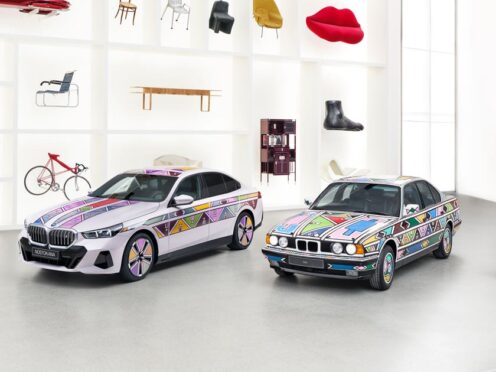BMW has been creating its famous ‘art cars’ since 1975, allowing some of the world’s most notable artists to put their own stamp on the German manufacturer’s latest models.
In fact, BMW has made 20 art cars since the program began, with American sculptor Alexander Calder kicking things off with a multicoloured 3.0 CSL in 1975. Other highlights include Andy Warhol’s M1 in 1979, and Jenny Holzer’s statement-covered V12 LMR in 1999.
Now, the company has revealed their 21st creation at the 2024 Frieze Los Angeles art fair.

BMW and South African artist Esther Mahlangu collaborated together to show off their latest idea with colour-change technology.
The BMW i5 Flow Nostokana can be ‘electronically animated’ thanks to a colour-changing film which covers the car’s entire body. It uses BMW’s clever E ink technology, which has previously been used on the iX Flow concept.
In 1991 Mahlangu designed BMW’s twelfth art car with a 525i – becoming the first woman in Africa to do so.
Inspired by passion, tradition and innovation.
For Stella Clarke, the concrete idea of colour change in a car was inspired by a fascination for the technology of colour change. Hear her inspiration behind the BMW i5 Flow NOSTOKANA: https://t.co/4nyd6WLbBj #BMWGroup #THEi5 pic.twitter.com/T4QHacHbNK
— BMW Group (@BMWGroup) March 1, 2024
The BMW i5 Nostokova is named after Mahlangu’s first son, and to make the colour-change technology work, the film that is electronically animated is applied across two strips each on the roof, bonnet and rear section as well as the vehicle’s sides.
There are several million microcapsules in every E Ink film, and the structure and arrangements of the colour particles can be changed by applying electronic voltage.
This can then make Mahlagu’s colours and patterns generated in constantly changing compositions. Though striking, there are no plans for BMW to put this colour-changing technology into production with the BMW i5 by Nostokova remaining a one-off.
